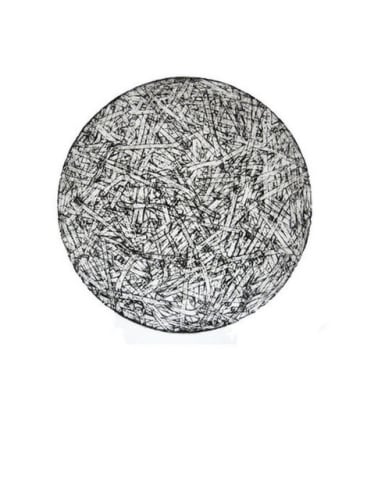Tondos, the first series of prints ever made by Jérôme Fortin, was exhibited in Montreal at the gallery Pierre-François Ouellette, from February 18 to March 13, 2004. The series of prints presented was developed during a residency in the Spring 2003 at the Ateliers Graff. Inspired by his previous body of work Seascapes/Marines, these prints are collographs made from bands of shredded paper.
"This form of printing uses materials that are arranged in a collage form. Through the repetition of gestures involving folding, the motifs that emerge remind some times rosettes and at other times the agitated surface of the sea. The gallery is presenting the entire series of prints, each published in an edition of 10. We are also pleased to announce that the first two prints of the series, Tondo I and II, have been acquired by the National Library of Quebec for their permanent collections of print.
Art, for Jérôme Fortin, is quite obviously an activity to which he devotes unstinting practice; and he does it with skilfulness that verges on magic. In his endless play with materials, printmaking in Fortin’s work is unexpected; his prints, moreover, renew the genre. From the outset, they intrigue us: we wonder about the underlying technique. Simple sheets of printed paper, generally taken from a single book, cut end-to-end and glued onto a round cardboard.
While relatively uniform visually, they each have a personality. Here is an astounding investigation into variations of some motifs – variations on a theme, as musicians say. Tirelessly, though never tiring, Jérôme explores a whole range of textures, constructions evocative of Aztec or Inca drawings, of ancient writings, of plant or fabric. One can draw up a long list of associations, for the allusions are intricate.
Before our eyes, a bouquet of nuances – greys, whites, blacks. Whether blurred or sharp, the series explores countless varieties of these hues, inviting our gaze to follow its meandering course. And yet, the objects that served as plates, the moulds, are as fascinating as the prints themselves. Distinguished by their colour and low relief, they are works in their own right. In truth, while dexterity plays an important role in the production of an art work, time and effort are also a factor." - Pascale Beaudet

